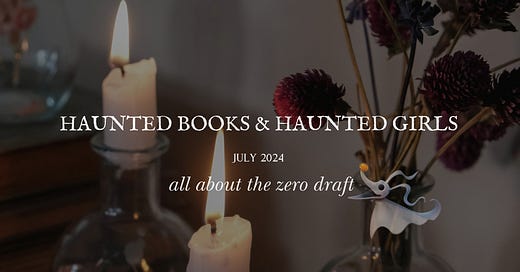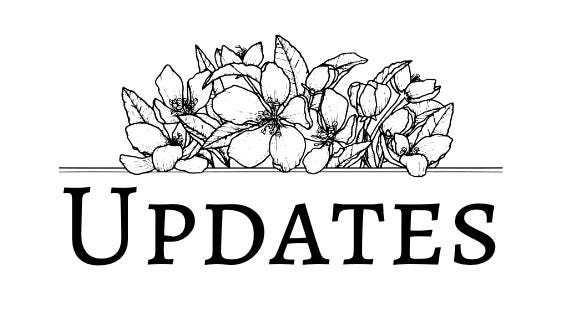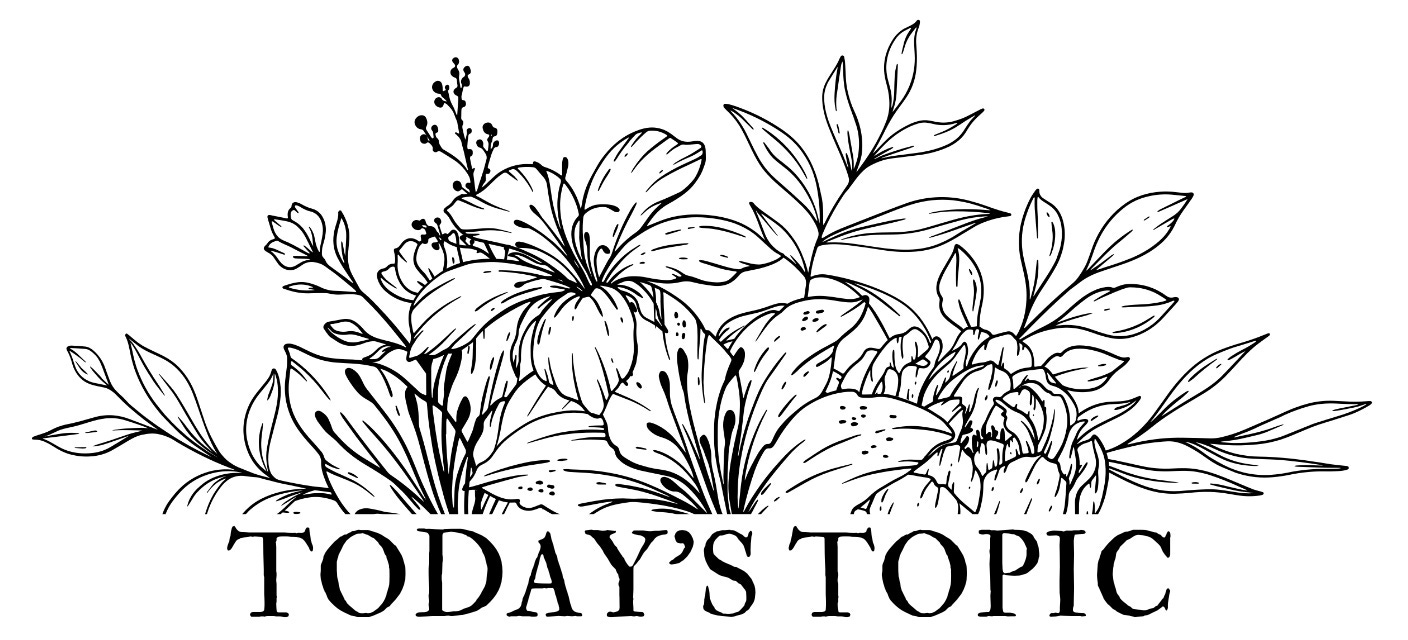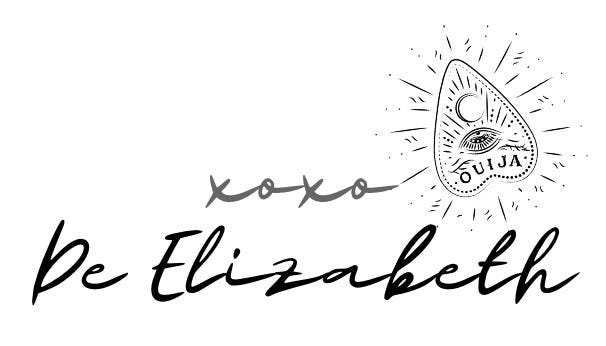Welcome back to Haunted Books & Haunted Girls! I’m so happy that you’re joining me. If you haven’t subscribed already, please consider signing up below (for free!), so you never miss an issue of this newsletter. It’s always spooky szn here.
Apparently, this is the summer for craft posts in this newsletter. When I showed up in your inbox last month, it was to talk about my revision strategy (and to share my go-to template for developmental edits). This time, I thought I’d talk a bit about drafting!
But first, some…
My debut YA novel, This Raging Sea, is officially off at copyedits. It’s an exciting milestone, and also means that more milestones are on the horizon (including one I get asked about pretty much on the daily…hint: it rhymes with sharks). In the meantime, if you haven’t already added TRS on Goodreads, you can do so here!
In between TRS deadlines, I’ve been working on a few secret projects. I’m dying to yell on main about everything, but if there’s one thing that remains true, it’s that vague eras don’t stay vague forever. And also, newsletter subscribers get any ~news~ first. And there might be something very exciting in the near’ish future. Take all of this however you’d like! 😌
Onward to…zero drafts! Like last time, I’ll preface this by saying that there are no “rules” when it comes to writing, and what works for one author might not work for the next—and that’s okay. Ultimately, whatever helps you get words down on the page is the “right” method for you.
I typically call my first draft a zero draft, because while it’s loosely outlined, it’s mostly a discovery draft. I’m telling myself the story. And, at first, I’m allowing it to be a mess (more on this in a second).
Before I wrote my zero draft of This Raging Sea, I prepped with a few things:
A general outline following a 3-act structure (I personally like the Save the Cat method for structural beats, but it doesn’t necessarily fit every book)
Some broad world-building/lore
A loose idea of the magic system
Character descriptions and face casts
And a ton of moodboards and playlists to set the vibes, naturally!
From there, I started writing. My biggest hurdle anytime I do a zero draft is just letting myself write the story “wrong.” I have a tendency to want to make it perfect on the first try, to nail all the plot escalations, to develop each character with nuance—but the truth is, not all of that is possible in an initial draft. All of that fine-tuning comes later on.
Writing my zero draft for TRS was a lesson in letting the story figure out what it wanted to become. In doing so, I deviated from my outline multiple times, wrote entire characters that I ended up cutting, and crafted plot threads that ultimately were too bananas to keep (but might have made it into the book in other ways). 👀
At the end of the day, I had to write it “wrong” in order to get it right.
Here are some things I found helpful while doing a zero draft for TRS:
A “brain dump” document - This is where I would jot down every idea or thought I had while drafting. This ranged from new plot ideas to things I wanted to fix or tweak later. Once my zero draft was finished, I organized it into categories—this helped guide my first revision.
Another document for research - Similarly, I had a separate document where I kept all of the research I did while drafting. I broke this into categories too, and it came in handy while I was revising later on.
Utilizing “clean-up days” - For the most part, I find it helpful not to edit a ton while I’m drafting. However, I’ll typically designate one day every week as a clean-up day to go back and tweak previous chapters. This ultimately leaves me with a fairly clean zero draft, and helps me thread plot twists and escalations.
“What’s next” outline - Similarly, at the end of a drafting session, I’ll write out what comes next (anywhere from one to three chapters ahead). This helps me avoid getting stuck.
Word count tracking & accountability buddies - Some people don’t like tracking their word count; for me, I find it helpful! I also love seeing my progress, so I’ll make a little color chart where I fill in a square for every five thousand words. I also find it helpful to draft simultaneously with a friend, where we cheer each other on or swap chapters at designated times.
When I finished my zero draft of TRS, I let it marinate for a bit before making a reverse outline, and then started tackling a list of self-edits. This took longer than the zero draft itself, but it’s where the bulk of the work came in. I used a variation of the revision template that I shared in my previous post, and ended up with the draft that I eventually sent to beta readers and my agent. From there, my agent and I revised again together before putting TRS on submission to editors.
I’ll also add that I don’t love drafting—I definitely prefer revising. It’s hard to go from editing a polished manuscript to drafting something new. It’s hard to let go of the desire to make it perfect. But there’s also something freeing about giving yourself permission to make a mess—to get to know your new story and world and characters without worrying about whether or not it’s “good.” To know that your first/zero draft is just for you. To say, “I’m telling myself this story for the first time. It will be chaotic before it’s pretty. It might be wrong before it can be right.”
Again, there are all kinds of methods for drafting, just like there are all kinds of writers. This is what works for me, and I hope it might help someone else! 🖤 And if not, well, here’s a meme:
Lastly, I thought I’d introduce a new section of this newsletter, where we go a little behind the scenes of my books. Today, I’m sharing a few songs that I have on my playlist for This Raging Sea! One of these might be extra-special for a secret reason…but they all capture the vibes of this book perfectly.
If you enjoyed this newsletter, I’d love it if you subscribed at the link below. It’s fully free, and all future issues will go directly to your inbox, so you’ll never miss a minute.
For more writing content, come hang out with me on Instagram!











